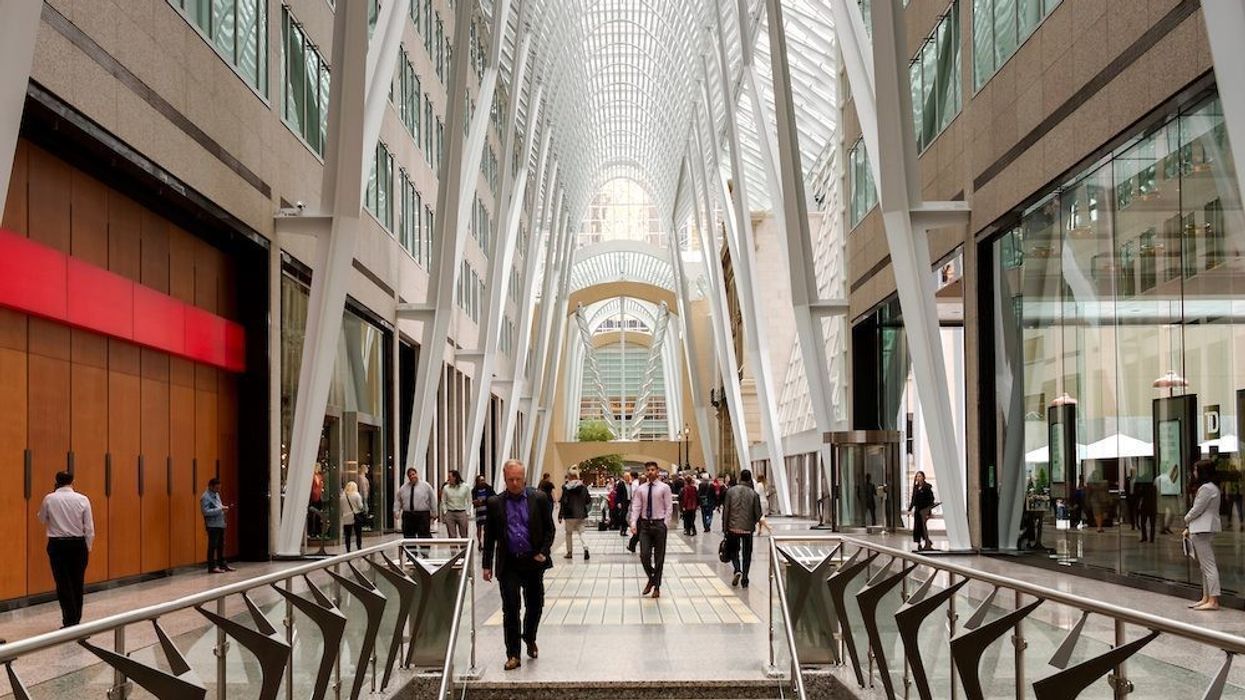As the COVID-19 pandemic finally draws to a close, workers will be imminently returning to their offices.
According to card swiping data, 7% of downtown Toronto workers had returned to their offices in January, but figures from the Occupancy Index show that number had grown to 12% by March 1. Venture out to the 905 and you’ll find that more than a quarter of workers no longer work remotely, which Jamieson Jackson, Managing Director of the GTA Office Practice Group at Colliers, says is because they typically commute by car rather than public transportation where, so the thinking goes, their risk of contracting COVID-19 is elevated.
“What we have seen across the board is people are starting to come back but they still haven’t made those key decisions about how many days a week employees will have to go in to the office, which days of the week they go in, or even who makes those decisions. There is still little consensus on those questions,” Jackson said.
Barring another curve ball like Omicron, workers will continue funnelling back into offices. A recent report from CBRE said Vancouver, Calgary and Edmonton would see their offices occupied before Ottawa, Toronto and Montreal.
“Most of our clients are planning to bring people back and are working on plans to do that,” Jackson said, adding that the hybrid work model will become permanent.
“Hybrid work is nothing new. One of our clients had 40% of their desks empty pre-pandemic because people were working in a hybrid work environment. Hybrid work is not new and it is here to stay, but that doesn’t eliminate the need, or demand, for office space. Even if you work part-time in the office, you still have to have an office for people to come to. Real estate will always be a tool to help companies drive business -- how that’s used may change, but the consensus is definitely that real estate will continue driving business forward, most notably for knowledge transfer, building company culture, and collaboration.”
READ: Canada's Office Occupancy to Hit 15-Year High in 2023
Occupied offices can’t come soon enough for downtown retailers, whether they’re restaurants or clothing merchants, the overwhelming majority of which have been reeling since the pandemic began.
Keith Reading, Director of Research at Morguard, described Toronto’s PATH, the underground pedestrian network lined with stores, as having become “a graveyard for those retailers, particularly the independents with smaller balance sheets.”
He added that downtown office buildings have been roughly 20-40% occupied during the pandemic, but as restrictions continue loosening and with companies on the cusp of returning their employees, downtown merchants should see an initial boost in revenue, especially as a result of pent-up demand known as ‘revenge retailing.’
“If you go from effectively zero revenue when you’ve got nobody in the office buildings to a partial return, and now we’re thinking later this month or in April that potentially all of the workers could return to their offices, then we get some semblance of normalcy and retailers will get a nice bump in sales over the next two or three months,” he said.
Reaching Previous Levels Will Take "A Number of Years"
However, the caveat is that offices will not return to 100% occupancy as a result of the hybrid work model. Although there is sure to be pedestrian traffic every day of the week, there will be much less than before the pandemic began.
“The way companies use buildings is changing, where the traditional work model of going in five days a week, from 9-5, is a thing of the past, so retailers will be losing a bit of their target market,” Reading said. “If you think about it, in terms of people returning to their offices, shopping downtown is all about convenience -- the worker wants to go on their lunch hour or maybe after work to pick up a couple of items, but if you have people only going into work three days a week, downtowns will be less dense moving forward. I don’t believe we will get back to where we were for a number of years.”
According to Colliers’ 2022 Retail Outlook, retailers’ luck began changing for the better last quarter when sales increased by 8.6% year-over-year in December to $57M. Clothing and accessories stores, in particular, benefited from a Christmas season with restrictions that were modest compared to the year prior, and their sales rose by 36.4% during the period. Colliers credits elevated COVID-19 inoculation rates for retailers’ reversal of fortunes.
Vacancy rates across all retail property types decreased in 2021; in Ontario, it declined by 1.3% to 8.8% in Q4-2021, while it dropped by 30 basis points to 10.2% in Quebec, and Alberta, at 8%, had the country’s lowest retail vacancy rate. Canada’s overall retail vacancy rate fell from 8.7% at the end of 2020 to 7.7% last quarter.
Although fewer office workers means fewer shoppers and, potentially, less retail revenue, downtowns are where the bulk of high-density residential construction occurs and that should offset some of the losses.
“Downtown residents, however, will help retailers make up some of the shortfall,” Reading said. “It’s no different for downtown residents, who are looking for convenience too.”





















